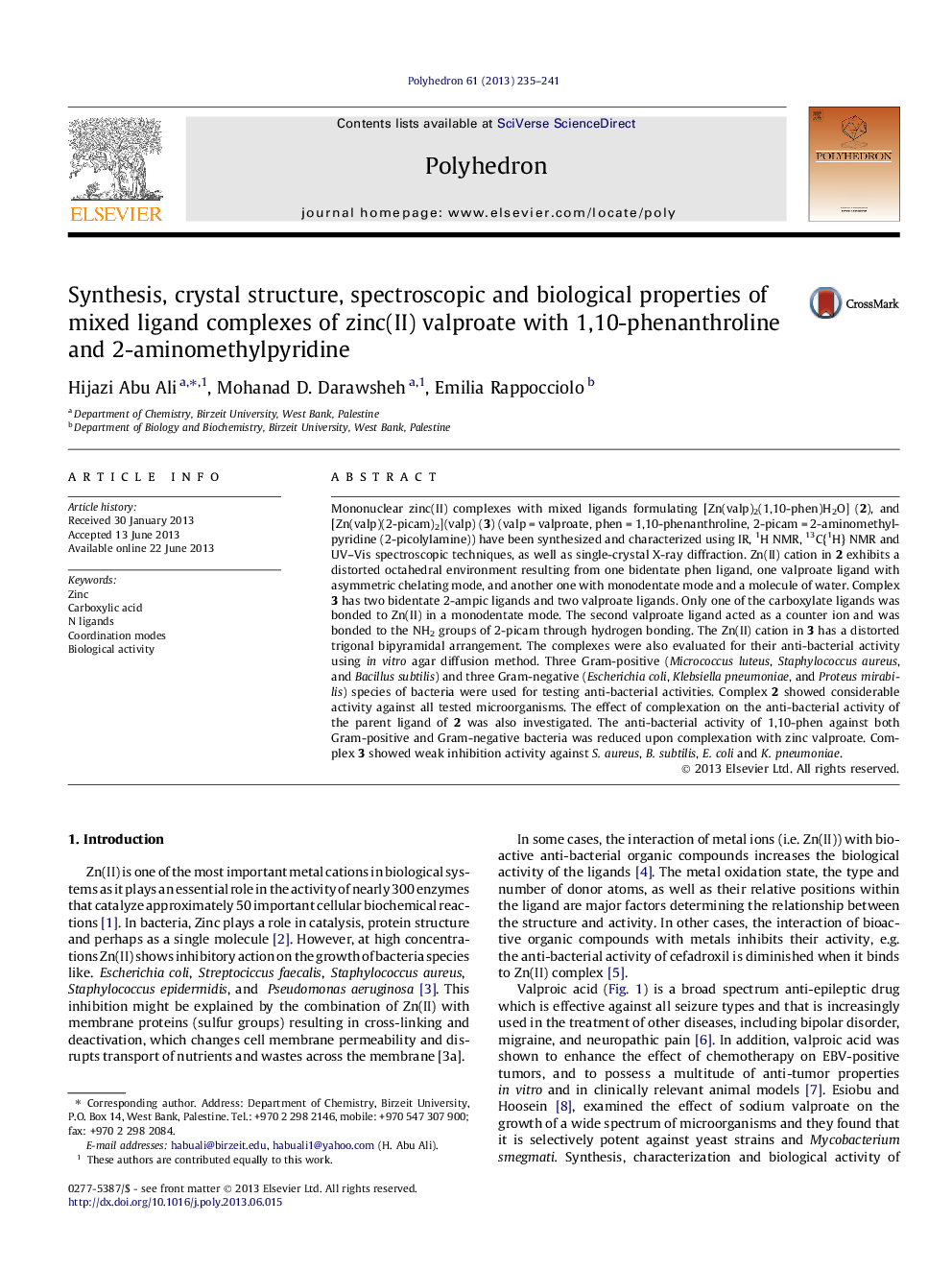| Article ID | Journal | Published Year | Pages | File Type |
|---|---|---|---|---|
| 1334526 | Polyhedron | 2013 | 7 Pages |
Mononuclear zinc(II) complexes with mixed ligands formulating [Zn(valp)2(1,10-phen)H2O] (2), and [Zn(valp)(2-picam)2](valp) (3) (valp = valproate, phen = 1,10-phenanthroline, 2-picam = 2-aminomethylpyridine (2-picolylamine)) have been synthesized and characterized using IR, 1H NMR, 13C{1H} NMR and UV–Vis spectroscopic techniques, as well as single-crystal X-ray diffraction. Zn(II) cation in 2 exhibits a distorted octahedral environment resulting from one bidentate phen ligand, one valproate ligand with asymmetric chelating mode, and another one with monodentate mode and a molecule of water. Complex 3 has two bidentate 2-ampic ligands and two valproate ligands. Only one of the carboxylate ligands was bonded to Zn(II) in a monodentate mode. The second valproate ligand acted as a counter ion and was bonded to the NH2 groups of 2-picam through hydrogen bonding. The Zn(II) cation in 3 has a distorted trigonal bipyramidal arrangement. The complexes were also evaluated for their anti-bacterial activity using in vitro agar diffusion method. Three Gram-positive (Micrococcus luteus, Staphylococcus aureus, and Bacillus subtilis) and three Gram-negative (Escherichia coli, Klebsiella pneumoniae, and Proteus mirabilis) species of bacteria were used for testing anti-bacterial activities. Complex 2 showed considerable activity against all tested microorganisms. The effect of complexation on the anti-bacterial activity of the parent ligand of 2 was also investigated. The anti-bacterial activity of 1,10-phen against both Gram-positive and Gram-negative bacteria was reduced upon complexation with zinc valproate. Complex 3 showed weak inhibition activity against S. aureus, B. subtilis, E. coli and K. pneumoniae.
Graphical abstractThis work report synthesis and spectroscopic characterization of mixed ligand Zn(II) complexes of valproate and aromatic nitrogen based ligands (1,10-phenanthroline and 2-aminomethylpyridine). The crystal structures of these complexes were determined using single-crystal X-ray diffraction. In vitro anti-bacterial activity of the prepared complexes and their parent ligands were investigated against different Gram-positive and Gram-negative bacteria using agar diffusion method.Figure optionsDownload full-size imageDownload as PowerPoint slide
